How To Clean Garage Floor With Oil Stains
Garage floors take a beating. Between heavy tools being dropped, dirty cars being parked, and all the things that spill on them, it can be difficult to keep them looking like new.
But without a doubt, one of the hardest things to clean off concrete garage floors is oil.
Whether from a leaky car, DIY engine repairs, or just from filling up the mower, oil always seems to find its way onto the floor.
While it isn't simple to remove, there are a number of ways to get oil off of concrete. Keep reading to find out how to clean oil off a concrete garage floor–whether it is a fresh spill or a long-standing stain–using some of the most effective methods out there.
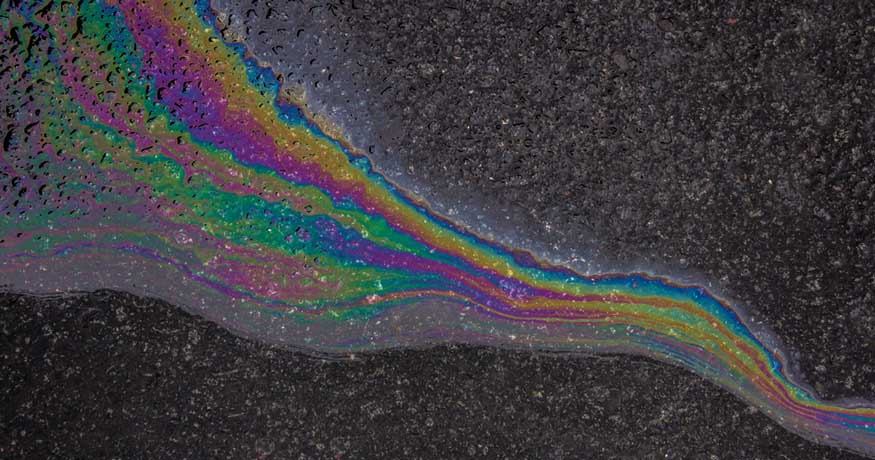
Disclosure: We may receive commissions when you click our links and make purchases. This does not impact our reviews and comparisons. All opinions are our own we pride ourselves on keeping our articles fair and balanced. For more info see our disclosure statement.
How Do I Clean Oil Stains off My Garage Floor?
Cleaning oil off your concrete garage floor is a two step process. First you need to soak up the initial spill, then you need to clean the oil off that has soaked in.
The most basic method is to soak up the initial spill with baking soda. Poor the baking soda on and let it sit for a few hours. Scrape up the baking soda then use a commercial concrete cleaner and scrub at the left over stain. This should remove most of the stain.
For more in depth details and other methods, keep reading.
How to Clean Initial Oil Spill
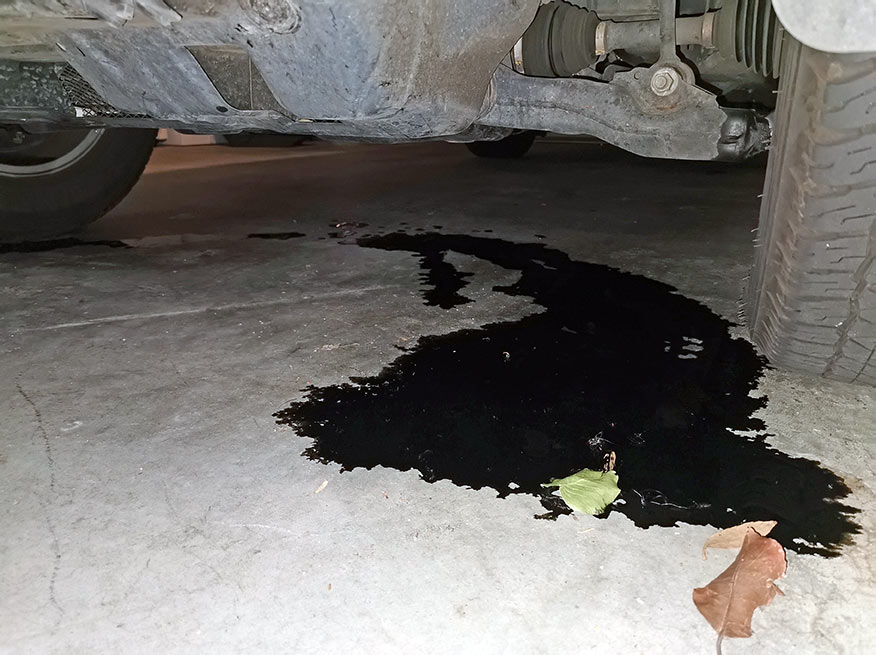
Cleaning an oil spill while it is still wet is one of the best things you can do to assure no lasting stain forms. Here are four simple ways to remove fresh oil from your concrete floor.
Baking Soda

Baking soda is naturally absorbent. That makes it a great choice for sucking up fresh oil so it doesn't have a chance to soak into your concrete. It also doubles as an effective abrasive cleaner to remove any leftover staining that has already started to form.
Cleaning steps:
- Pour a generous amount of baking soda over the pooled oil
- Wait a few hours
- Sweep up the baking soda and discard
- For any leftover discoloration, create a paste from baking soda and water and scrub the area
Kitty Litter
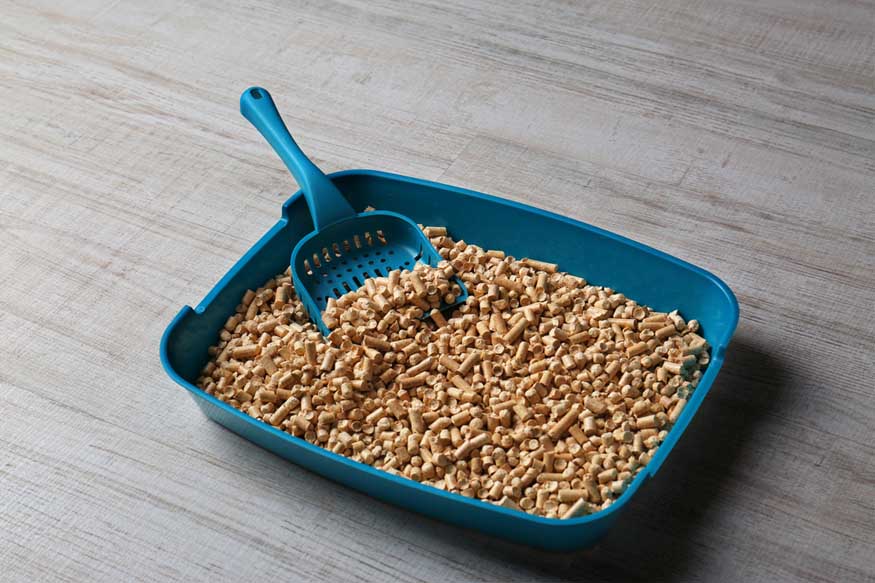
Kitty litter was made for one purpose: to absorb liquid. And that is what makes clay-based kitty litter an effective cleaner for fresh oil spills. As an added bonus, it is inexpensive, available in large quantities, and most cat owners are going to have plenty of it on hand.
Cleaning steps:
- Pour a generous amount of kitty litter onto the spill
- Allow litter to clump and dry
- Sweep up litter and discard
Cornmeal or Cornstarch
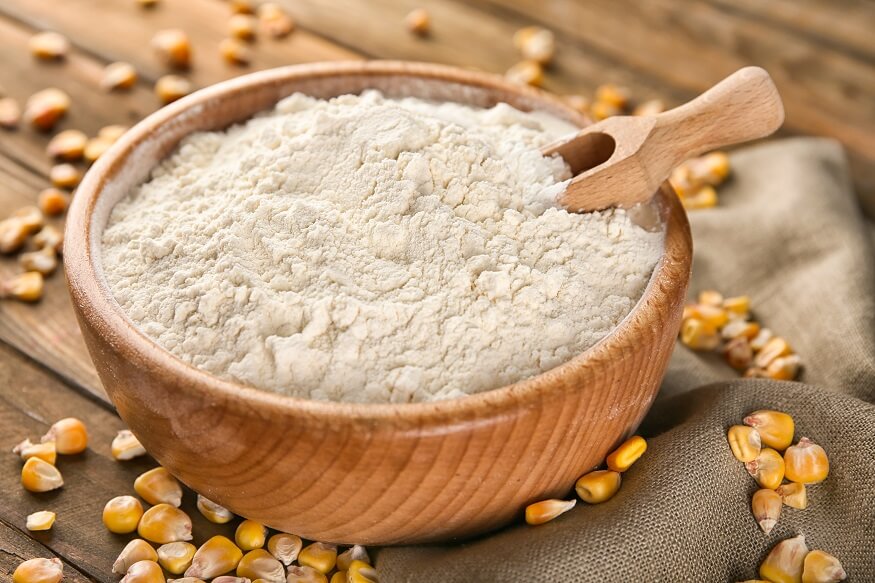
Another great, absorbent material for soaking up freshly spilled oil, is cornmeal or cornstarch. If you have ever cooked with these products, you know how fast they can thicken up a sauce. That same property makes them perfect for sucking oil off the floor so it doesn't soak into the concrete below.
Cleaning steps:
- Pour cornmeal or cornstarch onto the fresh oil
- Allow plenty of time for the oil to absorb and dry
- Sweep up and discard
Sawdust and Paint Thinner
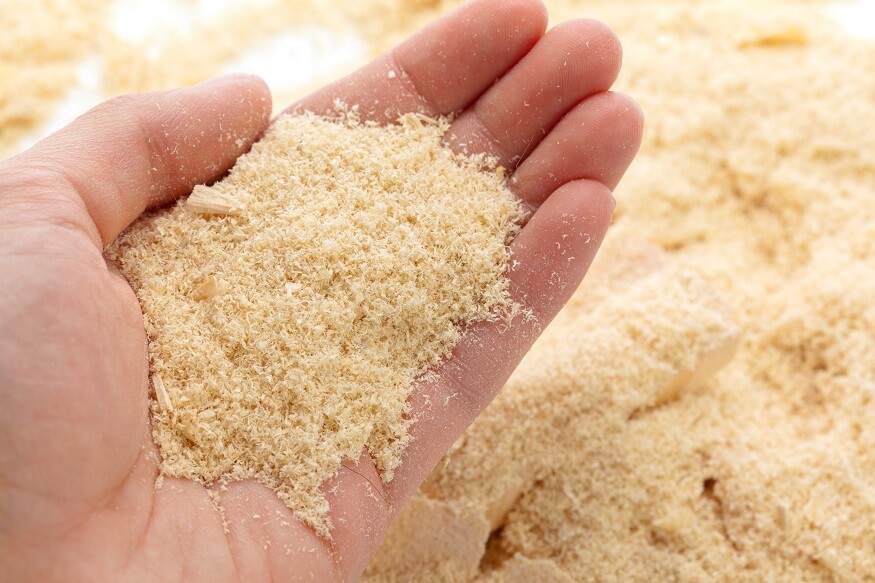
For fresh oil stains that have already begun to set, you may need a little more help to pull that grease out of your concrete to avoid long-term staining. Using a mix of sawdust, which absorbs oil quickly, and paint thinner or acetone, which acts as a solvent to break down the remaining oil stain, can help return your floor back to its previous glory.
Safety note: paint thinner and sawdust are all highly flammable, so be sure to keep this mixture away from open flames and heat sources.
Cleaning steps:
- Saturate your sawdust in paint thinner
- Smear the mixture over the oil spill
- Cover the area with a sheet of plastic and allow to sit for at least a few hours
- Remove the plastic, sweep up the mixture, and discard
How to Clean Oil Stains from Concrete Garage Floors
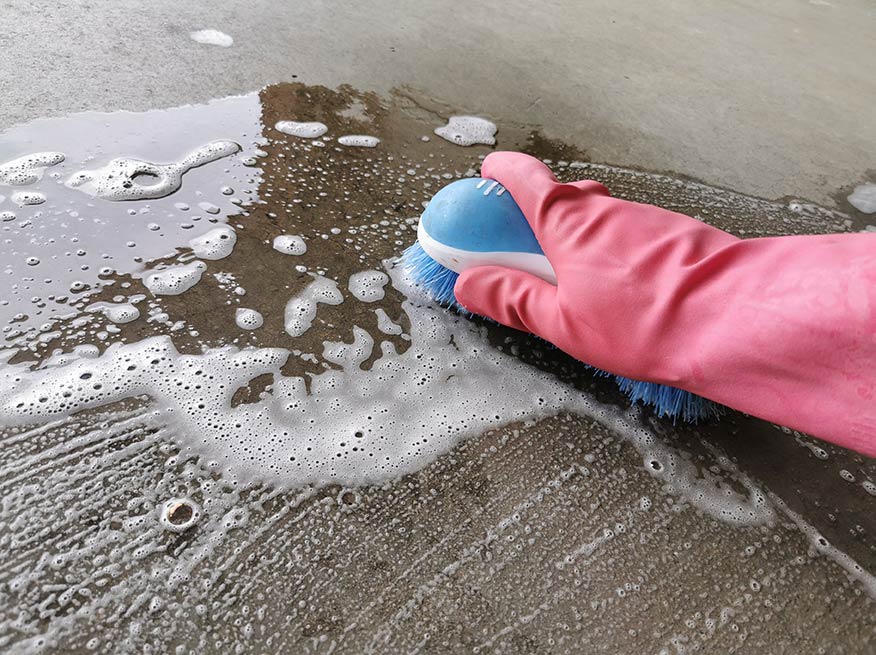
Cleaning fresh oil takes some work, but it is certainly easier than removing a set-in stain. Still, with the right products, it is possible to remove even years-old oil stains from your garage concrete floor.
Here are nine methods that have worked well for us.
Concrete Cleaners

Poultice concrete cleaners work in a similar fashion to the homemade sawdust and paint thinner mixture we discussed above. Some of the ingredients work as a solvent to clean the concrete while others work to absorb and trap the oil.
Commercial concrete cleaners are more effective than homemade mixtures and are more likely to work on set-in stains. You can find these types of cleaners at the hardware store or from many online retailers.
These types of cleaners are less abrasive and contain fewer harsh chemicals than other products on this list. Still, it is good to exercise some caution when using them to avoid contact with your eyes and prolonged contact with your skin.
What you'll need:
- Concrete cleaner
- Coarse brush
- Dustpan
Cleaning steps:
- Pour the cleaner onto the stain
- Allow the cleaner to dry
- Use a coarse brush to scrub the dried cleaner away
Industrial Grade Degreasers

Degreasers work to remove set-in oil from concrete through chemical reactions. These reactions break down or bind the oil which frees it from the surface. Unlike general or all-purpose cleaning products, degreasers contain ingredients that react specifically with greasy organic soils.
These powerful cleaning agents may be warranted if you have an especially old stain or layers of oil stains that have built up over the years. You can purchase industrial grade degreasers from specialty retailers and some online stores.
These cleaners tend to be more caustic than general cleaners and concrete cleaners, though there are some effective non-toxic, less corrosive products available. Make sure to read the instructions and follow any safety precautions given on the bottle.
What you'll need:
- Degreaser
- Wire brush
- Kitty litter or water
Cleaning steps:
- Pour the degreaser over the stain
- Scrub the entire area with a wire brush
- Spray the area with water or use kitty litter to soak up the liquid
Eco-Friendly Degreasers

Eco-friendly degreasers work off the same principles as industrial grade products but contain ingredients that are less harmful to the environment. They usually contain solvents and emulsifiers made from organic hydrocarbons rather than more toxic carnosine and paraffin.
Eco-friendly degreasers can be found at most home supply stores and are available from many online retailers.
While they are safer for you and the planet, it is still good to exercise some caution when using these products. Wear gloves and be careful to not splash any into your eyes or mouth.
What you'll need:
- Degreaser
- Wire brush
- Kitty litter or water
Cleaning steps:
- Pour the degreaser over the stain
- Scrub the entire area with a wire brush
- Spray the area with water or use kitty litter to soak up the liquid
Enzyme Cleaner
Enzymatic cleaners break down organic particles using the natural action of enzymes and certain bacteria. Most of these cleaners contain a range of enzymes, with each targeting a different type of organic soil. Lipase is the type of enzyme most effective for breaking down fats such as those in motor oil.
Enzyme cleaners can be purchased at some hardware stores, grocers, and many online retailers. Many products are geared toward cleaning pet stains and deodorizing so be sure your cleaner is advertised as being an effective degreaser in addition to other uses.
In general, enzymatic cleaners are very safe. But be sure to read the label on your product for any precautions that should be taken during use.
What you'll need:
- Enzymatic degreaser
- Mop or rag
Cleaning steps:
- Pour enough cleaner to cover the entire stain
- Allow the liquid to sit for about one day
- Once the cleaner has dried you can use a rag or mop to wipe away any remaining residue
Powdered Detergent

Like other soaps and degreasers, laundry detergent contains compounds that attract and lift greasy residue from surfaces. The abrasive texture of powdered detergent, specifically, adds to its cleaning power, especially if you are willing to use a little elbow grease.
You can buy powdered detergent at the grocery store or from most online retailers. Any type of powerful laundry detergent will work.
What you'll need:
- Laundry powder
- Water
- Wire brush
- Rag or water
Cleaning steps:
- Pour enough powdered detergent over the stain to fully cover it
- Add just enough water to the area to create a paste
- Scrub the area with a wire brush for at least two minutes
- Let the mixture sit for an additional fifteen minutes then remove with water or a wet rag
WD-40

WD-40 is a powerful solvent that works to break down greasy residue. It has the ability to penetrate porous concrete and lift oil from the surface, thereby removing stains.
WD-40 is sold at most hardware stores, some grocery stores, and plenty of online retailers.
It is best to use gloves when handling WD-40. It can cause health problems if directly inhaled or nausea and dizziness if used in small spaces without adequate ventilation. It may be necessary to open your overhead door when working with larger quantities of this product.
What you'll need:
- Can of WD-40
- Rag
Cleaning steps:
- Spray enough WD-40 on the stain to cover it completely
- Allow it to sit for at least 20 minutes
- Wipe away the liquid with a shop rag
- Repeat as needed until the stain is gone
Vinegar
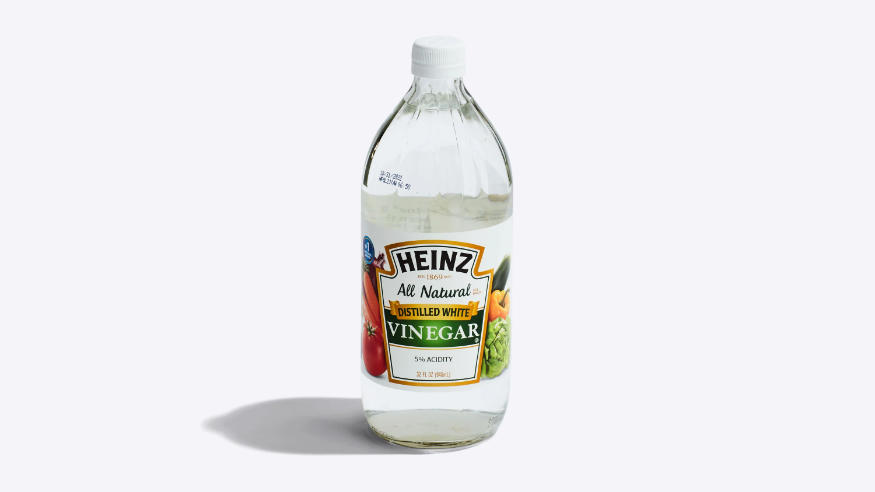
Vinegar is a powerful astringent that has the ability to bind and remove oil. Just as adding vinegar to an oil stain on your clothing can remove it, so too can adding vinegar to stained concrete.
Distilled white vinegar is cheap and easy to find. You can pick up a large jug at your local grocery store or online.
What you'll need:
- Vinegar
- Detergent
- Baking soda
- Water
- Scrub brush
Cleaning steps:
- Mix 2 tbs vinegar, ½ tsp baking soda, and ¼ tsp detergent with 2 c water
- Pour enough of the mixture over the stain to cover it
- Scrub vigorously
- Rinse the spot with cold water and repeat as needed
Dish Soap
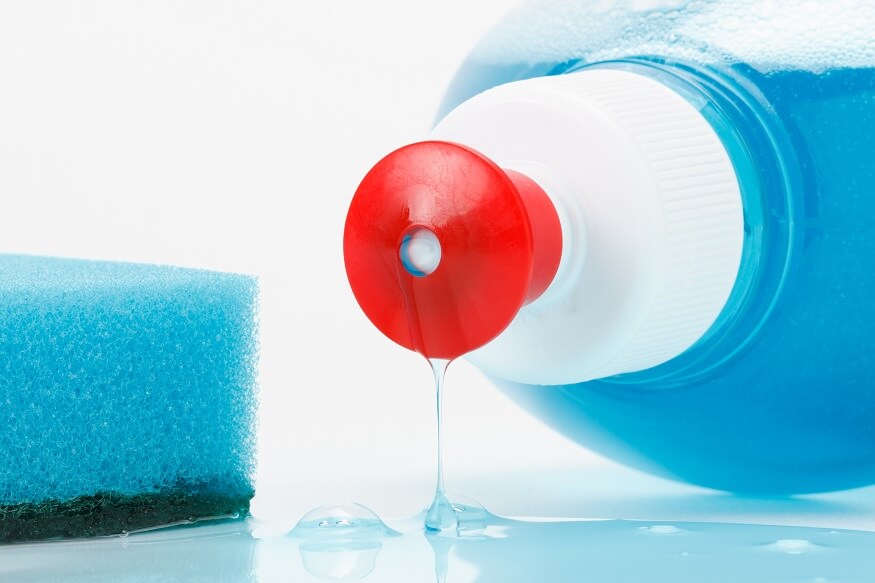
Another cheap and easy way to clean old oil stains is to utilize standard dish soap. Like other detergents, the compounds in dish soap were created to bind and lift grease from surfaces. Just as it can remove chicken fat from your baking dish, it can remove old oil from your garage floor.
You can find dish detergent at any supermarket, most convenience stores, and online. Look for concentrated products that brag about their grease-fighting powers.
What you'll need:
- Dish soap
- Paper towels
- Water
Cleaning steps:
- Cover the entire stain with dish soap
- Allow it to sit for one hour
- Wipe up the excess soap with paper towels then rinse the area with water
- Repeat as needed
Mineral Spirits

Like paint thinner, mineral spirits are petroleum-based solvents that are highly effective in fighting oil stains. But mineral spirits are more refined than paint thinner, which makes them a more potent degreaser.
You can find mineral spirits at most hardware and paint stores and online.
Mineral spirits can be irritating to the skin, eyes, and lungs. It is best to wear gloves and work with this medium in a well-ventilated space.
What you'll need:
- Mineral spirits
- Wire brush
- Rag
- Sawdust and plastic sheet (optional)
Cleaning steps:
- Pour enough mineral spirits over the area to cover the stain
- Scrub the area vigorously with a wire brush
- Wipe away the remaining liquid with a rag
- If the stain remains, try soaking sawdust in mineral spirits to make a poultice, apply it to the stain then cover with plastic as described in section 1
Make Future Cleanups Easier
There are plenty of great options for removing oil from your concrete garage floor.
For fresh spills, baking soda, kitty litter, and poultice mixes all work well to soak up oil before they have a chance to stain.
For set-in stains, you have a lot of great choices. Industrial degreasers and enzyme cleaners work superbly, but common household items such as vinegar, powdered detergent, and mineral spirits can also be effective.
If you find yourself dealing with oil spills more often than you would like, there might be an easier solution.
Painting your garage floor can add a layer of protection that keeps oil from soaking in and staining the concrete. Choosing a paint that is durable, easy to work with, and created for the specific purpose of covering concrete floors is important.
In our article, The Best Garage Floor Paint, we walk you through the most popular paint options so you can find what is right for you.
Have a stubborn oil stain on your garage floor or more questions about what you can do to protect your concrete from staining? Let us know in the comments section below.
How To Clean Garage Floor With Oil Stains
Source: https://www.essentialhomeandgarden.com/how-to-clean-oil-concrete-garage-floor/
Posted by: richardsonserot1971.blogspot.com

0 Response to "How To Clean Garage Floor With Oil Stains"
Post a Comment